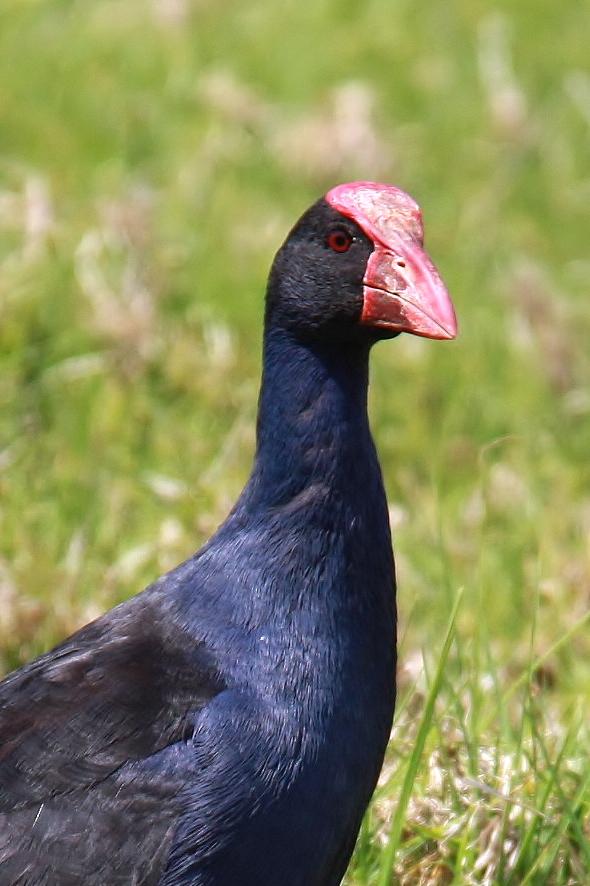
Credit: C. O'Connor
What's in a face? In addition to their plumage, Pukeko–large purple swamphens found in New Zealand–convey information about their status through their faces. A new study from The Auk: Ornithological Advances shows that the strongest predictor of male dominance in Pukeko is the size of their frontal shield, a fleshy ornament on their bill that can change quickly.
Cody Dey of McMaster University (now at the Great Lakes Institute for Environmental Research) and his colleagues measured the plumage coloration and frontal shield width and coloration of 272 adult Pukeko on New Zealand's North Island, then tested how those traits were related to the dominance hierarchies they observed within groups. While shield color and plumage brightness and color were all related to social dominance, the strongest predictor was frontal shield width. Frontal shield width was also strongly correlated with testes mass, suggesting that it is the primary status signal for males.
Pukeko shields can decrease in size in as little as a week in response to aggressive challenges from other males, thanks to hormonal changes. "The take-home message from this study is that birds use both feather coloration and bare-part coloration as signals, but these different types of signals have different properties, and bare-part signals in particular are probably more accurate because they can be updated," says Dey. "Feather-based signals can only change when the individual molts, which usually only happens once or twice a year. Since we have mostly been studying feather coloration in birds, we might have been missing a great deal of information about the role of avian coloration."
"This exciting study on the understudied Pukeko adds strong support to our growing understanding of bare part signaling. In particular, the authors reveal the dynamic nature of pigmented bare in communicating status and condition information," adds Franklin and Marshall College's Daniel Ardia, an expert on signaling in birds who was not involved with the study. "The differences they find between frontal shield signaling and plumage reveal the complexity of signaling and demonstrates that bare parts are not simply redundant signals."
###
"A bare-part ornament is a stronger predictor of dominance than plumage ornamentation in the cooperatively breeding Australian Swamphen" will be available January 18, 2017, at http://americanornithologypubs.org/doi/full/10.1642/AUK-16-119.1 (issue URL http://americanornithologypubs.org/toc/tauk/134/2).
About the journal: The Auk: Ornithological Advances is a peer-reviewed, international journal of ornithology that began in 1884 as the official publication of the American Ornithologists' Union, which merged with the Cooper Ornithological Society in 2016 to become the American Ornithological Society. In 2009, The Auk was honored as one of the 100 most influential journals of biology and medicine over the past 100 years.
Media Contact
Rebecca Heisman
[email protected]
http://www.aoucospubs.org





